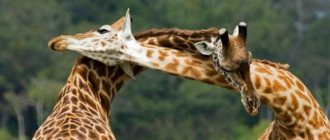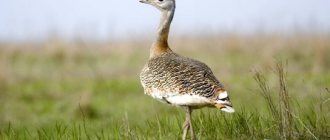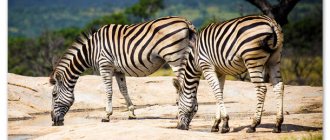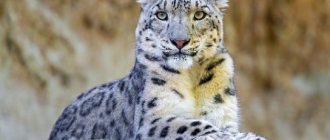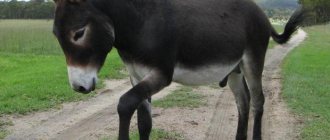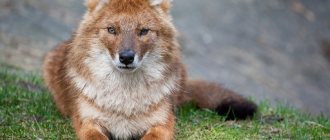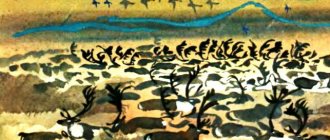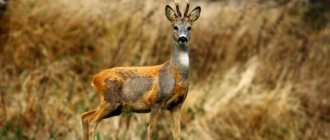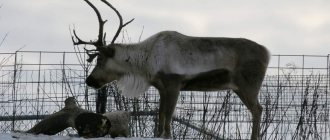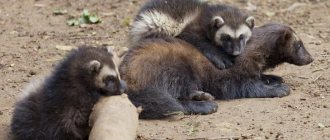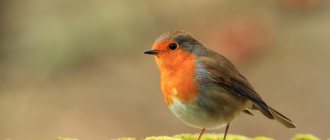Donkeys are a subgenus of equine mammals. Donkeys are distinguished from real horses by a large head with long ears, a thin tail with a brush of long hair at the end and narrow hooves.
Domestic donkeys have become known as unprepossessing, unassuming and very stubborn animals, that is, they have earned a negative assessment from people rather than a good reputation.
But it turns out that much of what we know about these animals is wrong.
- Donkey - general description
- Donkey breeds
- Crossing donkeys
- How is a donkey different from a donkey?
Scientific classification
- Kingdom: Animalia (animals)
- Phylum: Chordata
- Class: Mammalia (mammals)
- Order: Perissodactyla (oddactyls)
- Family: Equidae (equines)
- Genus: Equus (horse)
- Species: Equus asinus (wild ass)
The scientific name of the wild ass comes from two Latin words: "Equus", meaning horse, and "Asinus", meaning donkey, which comes from the archaic word "asnos".
Photo: Crookwell Gazette
Origin
Representatives of the equine family in Africa are known from the end of the Middle Miocene to the present. The forms from which the donkey evolved were first discovered in North Africa and date back to the early Pleistocene. Apparently, by the end of the Pleistocene they already occupied areas of the Mediterranean and Red Sea.
In Asia, wild asses appeared at the end of the Middle or Upper Pleistocene. African asses appeared at the end of the Upper Pleistocene in the Levant and North Africa. Their populations gradually spread westward across North Africa during the Neolithic, displacing the savannah zebra. This process may have been partly related to the domestication of the wild ass.
Benefits for humans
Today, many nationalities are engaged in breeding donkeys.
And this is not done by chance, because these animals bring great benefits:
- In Mexico and central America, this animal is one of the popular modes of transport. Moreover, you should not underestimate the donkey, since in some cases it can be more effective than a car or even the most powerful horse;
- During the reign of Cleopatra, breeding females that provided the owner with milk was considered a popular practice. This product was very useful, which was due to its properties: it helps to lose weight, has a rejuvenating effect, makes facial skin lighter;
- Donkeys have a large presence in many countries. Our country, where donkey farms operate, is no exception. But they are created for a reason, but for the purpose of making a profit. These animals are valued for their wool, meat and milk. Moreover, the number of people wishing to purchase these products increases every year.
Also, this fold-eared animal has become a popular image, which is used in many cartoons.
And if you ask children to name their favorite characters, they will probably remember this animal too. Moreover, in each case, the image of good-natured creatures with a vulnerable soul is created for donkeys.
Wild and feral populations
Geographical range
Historically, wild ass populations ranged from northwestern Sudan east of the Nile River southeast to the Atbara River in eastern Ethiopia, to Sennar in northern Somalia, and north to about Massawa. In historical times, donkeys had a continuous range in the northern part of the African continent ; they were widespread in Algeria during the Pleistocene, and there are reports of wild herds living in remote areas of the Sahara and northern and southern Egypt. These ungulates were found in the Near and Middle East and probably also in the Arabian Peninsula, in suitable rocky habitats, but not in lowland deserts or sand dunes.
Photo: Miriana Dorobanțu
The wild ass lives in extremely remote and hostile environments . In the middle of the last century, it inhabited the western side of the Red Sea in the hills of northern Eritrea. Now about a thousand individuals live in southern Sudan, the Ethiopian Danakil Desert and northern Somalia.
Feral populations of domestic donkeys are found in many places around the world. Large populations exist in the southwestern United States. They were brought to America by Spanish explorers in 1536; it is likely that some individuals escaped soon after and formed wild populations. Before the advent of the railroad in the 19th century, large populations of wild animals did not exist because they were too valuable to be allowed to escape. In the last few centuries, feral donkey populations have grown and competed with native ungulates for scarce grazing resources.
Photo: tuboluv
A similar situation occurred in Western Australia. Domesticated donkeys were brought to this continent for heavy work and cargo transportation . After the railroads were built, the escaped animals formed large wild populations.
The North African donkey was introduced to southern Europe from Algeria by the Romans before the wild population was extirpated. Now on the European continent, feral individuals are often observed on the Cyprus Karpas Peninsula.
Habitat
Donkeys are extremely hardy generalists that can survive in a wide variety of environments. Once outside human control, they can quickly move long distances to new areas.
Photo: Julia Christe
Within their natural range, donkeys inhabit arid, rocky areas with humps that are used as observation points. During the day, temperatures often exceed 50 °C , so animals usually do not move more than 4-6 km from the water.
Home range
Some males are territorial, inhabiting and defending certain areas for several weeks. The home range is marked by the presence and behavior of a territorial male, who stands at the edge of the territory in a rigid stance with his ears pointing forward. The male waits in this position until the intruding conspecific approaches within 10-20 meters of the border of his territory, then moves forward to meet the opponent. Then he drives away the attacker, chasing him at a distance of up to 1 km. Fights are rare, but some individuals have bite scars.
Personal territories are large, on average 19 square kilometers . Males mark their territory with large piles of dung. These piles are not necessarily left at the boundaries of the territory. In desert areas, where the landscape is uniform and territories are large, dung heaps can allow the male to recognize his territory.
Photo: Manuel Nevarez
Males leave their home range for a short time to reach drinking areas. They can maintain personal territories throughout the year, even during the dry season when mares and foals leave the area due to lack of food and water.
What does a donkey eat?
Photo: Animal donkey
These animals are as unpretentious in nutrition as in everything else. The wild donkey eats almost any plant food that it can find in the area where it lives.
The diet includes:
- grass;
- bush leaves;
- branches and leaves of trees;
- even prickly acacia.
They have to eat almost any vegetation that they can find, because they have no choice. They often have to search for it for a long time in the poor area where they live: these are deserts and dry rocky lands, where rare stunted bushes are found every few kilometers. All oases and river banks are occupied by people, and wild donkeys are afraid to come close to populated areas. As a result, they have to live on meager food with very little nutrients, and sometimes go without food for long periods of time - and they are able to endure this with fortitude.
A donkey can starve for days and still not lose strength - domesticated ones have less stamina, but they are also inherent, and this is largely why they are valued. They can also go without water for a long time - they only need to drink once every three days. Other wild animals in Africa, like antelope and zebra, although they also live in arid conditions, need to drink daily. At the same time, donkeys can drink bitter water from desert lakes - most other ungulates are not capable of this.
Interesting fact: An animal can lose a third of its body moisture and not become weak. After finding the source, after drinking, it will immediately compensate for the loss and will not feel any negative effects.
Character traits
Appearance
The donkey has narrow, vertical hooves, ideal for rocky areas. They are safe to move on uneven surfaces, but they are not suitable for fast galloping. True, donkeys can accelerate to 70 km/h !
Externally, donkeys can be distinguished by the presence of chestnuts, horny skin formations, on the forelimbs. Other representatives of the equine kingdom have them on both front and hind limbs. Chestnuts are believed to be remnants of the proximal metatarsal and carpal pads.
Photo: Wikipedia
In addition, donkeys have shorter and softer ; the tail is softer, with shorter hairs starting at the end of the tail rather than at the base. Donkeys can be distinguished from kulans by the presence of transverse stripes on their legs, which are much less common among kulans.
A donkey's ears are long; The hooves are small and narrow, with no noticeable difference in size between the front and rear hooves. The forelock is missing.
Coloring
A dark narrow stripe on the back sometimes extends from the neck to the tail, it can also be intermittent; there are no white borders on it. The legs usually have either cross bars (Nubian subspecies) or dark cross bars (Somali subspecies). North African wild asses have 1 or 2 shoulder stripes and crossbars on their legs. The Middle Eastern subspecies are characterized by black ear patches, a single black shoulder stripe, and gray legs. There is no white color on the buttocks and rump.
Photo: Peapix
The coat is generally brown or gray in color. The color varies depending on the season, but slightly, becoming more fawn in summer and grayer in winter. Light areas include the snout, the ring around each eye, the lower surface of the mandible, the inner ear, the lower body, the inner surface, and most of the lower legs. Each subspecies differs in color saturation and shade. The Nubian subspecies is more reddish in color, while its Somali counterpart is more greyish.
Dimensions
The wild ass is the smallest species in the genus . Shoulder height 110-140 cm; North African subspecies are 110-122 cm high at the shoulder, while Somali subspecies are 125-130 cm high at the shoulder. The average body length is 2 meters, the tail length is 45 cm. The average body weight usually does not exceed 250 kg. The largest subspecies can gain weight up to 430 kg.
Anatomical features
Photo: funnyplox
Donkeys also differ from horses in a number of anatomical features that are not noticeable at first glance:
- different number of vertebrae;
- 31 pairs of chromosomes, horses have one more pair;
- body temperature is 37 °C, that is, one degree less than that of other representatives of the genus.
Donkeys tolerate hot and dry conditions well, often in areas with poor food supplies. They respond to cellular and extracellular dehydration by increasing water intake. They have a higher thirst threshold than other equids.
Sweating caused by heat and exercise is controlled by adrenergic nerves. Donkeys can also change their resting metabolic rate depending on the quality of their diet.
Diet
Photo: Anthony Rae
Donkeys are herbivores . They will use any food available. Riparian vegetation and grass pastures provide important food for animals in spring and summer. Because donkeys are opportunists, they have a significant negative impact on native vegetation. The greatest impact on vegetation occurs near water.
Notably, animals in high-density populations eat lower quality feeds with higher crude fiber content than animals in low-density populations.
Popular message topics
- Metals in Art
Various metals have been used in art since ancient times. They were created for both practical and aesthetic purposes. The main metals used were bronze, silver, gold, tin, copper, lead, brass and iron. - Carnivorous plants
There are so many beautiful plants and flowers in our world. Everyone knows that animals eat grass. There are also plants that eat insects. These plants grow in places where there are insufficient nutrients in the soil and poor living conditions. - City of Vladikavkaz
Vladikavkaz is the capital of North Ossetia. The city is located along the Ossetian sloping plain on the banks of the Terek River.
Social structure
The social organization of donkeys consists of individuals, small groups, large groups and herds. For example, in Ethiopia, 5% of the population is solitary, 28% are groups of 2-6 individuals, 31% are groups of 7-20 individuals and 36% are herds of 21-60 individuals.
Photo: Jonathan Diemel
Small groups usually consist of one male and several females, or exclusively adult males or females. Large groups contain 1 or more males and up to 10 females; some large groups consist of only females. The herds consist of 25% males, the remaining members are females and their offspring. There are no permanent groups, except for small groups consisting of 2-3 year old young animals with their mother. gather during the day to feed , but in the evening they disperse again.
Adults of both sexes predominate over young animals. In large groups there is no consistent leadership; any adult can lead the group for a short time. There is no antagonistic behavior when there is a change in leadership.
Let him communicate
Better not leave him alone. He may become depressed and lose his zest for life. If you take several individuals at once and place them together, this will significantly brighten up their lives.
Several females or two males that have been castrated get along well nearby. Between them you can from the outside notice a special friendship and affection until the very end of life. This is an example of true fidelity. If you decide to separate them, they are unlikely to be indifferent to it.
These are excellent animals worthy of love and respect. Take care of them and they will do you a lot of good.
Behavior
Donkeys move along well-trodden paths, which often lead to water sources. The most common modes of movement are symmetrical walking or trotting and asymmetrical galloping. At rest, the head is held at a comfortable angle, the ears are laid back. Rest periods last from 1 minute to 2.5 hours.
Photo: BJ Stacey
The animal is active in the morning and at night, the number and duration of waking hours varies depending on the climate. In the heat of the day, donkeys rest. On average, they spend 50% of their time feeding; 35% of the time resting and standing; 10% of the time is spent moving.
Donkeys are always on guard . They cannot be forced to do what they believe is dangerous. This behavior gave the donkey a reputation for being stubborn. If an animal hears a sudden noise, it will raise its head and freeze in place or run a few steps to investigate the stimulus. This distinguishes them from horses, which, when frightened, panic and run away.
Playful behavior is mainly characteristic of foals. The game consists of short runs, quick stops, turns, jumps and kicks. Sometimes stones and twigs are used in the game. Teenagers play next to their mother or other adults who ignore them. Domesticated individuals play with relatives, other animals and people with whom they are familiar. They get along well with other pets, especially horses, sheep, goats, cows and llamas.
The secret is in proper care
Having found out how many years a donkey lives, you need to strive for the highest indicators, because they are quite achievable if you create the right conditions for the artiodactyl. If your pet shows signs of illness, you should not put the matter off, but rather call a veterinarian and dispel all doubts regarding the treatment procedure and the danger of the current condition.
If you treat such issues with disdain, you can lead to a chronic condition, worsen the disease, or even say goodbye to your pet. So if you have already taken responsibility, it is better to take care of his well-being.
It is difficult to find another creature that is as kind, charming and affectionate, and at the same time endowed with intelligence. People have a stereotype about their stubbornness, not supported by true evidence. In fact, the donkey is immensely good-natured. Photos of these animals can indicate their nobility, calmness and cleanliness.
In order for them to feel good, you need to give them dry shelter where they can sleep, as well as food that contains a lot of fiber.
Communication
Donkeys use auditory, visual, tactile and olfactory communication. They have excellent vision , acute hearing and a well-developed sense of smell.
Photo: Ansgar Scheffold
They are characterized by three main vocalizations:
- the roar is the most complex, it is used when meeting with relatives, during copulation, in antagonistic encounters and in foals separated from their mothers;
- growls are antagonistic vocalizations that communicate position relative to other animals;
- snorting is an alarm signal.
Tactile communication takes the form of nasal/nasogenital contact or mutual grooming of the withers.
Photo: Brian Wangenheim
In olfactory communication, the donkey's muzzle is raised to the sky, the upper lip is compressed and extended forward, the upper teeth and gums are exposed, and the nostrils are wrinkled. This behavior exposes the vomer and nasal organ.
How to care for an animal?
Let's look at the main points and tips for caring for donkeys
:
- The donkey eats in quantities that are minimal for an animal. The daily requirement is about 1 kilogram of grain per day. They can also eat carrots and beets. They should be fed no more than three times a day;
- They can graze and live in any conditions, without requiring a certain comfort;
- An animal can exist for several days without water or food at all.
Reproduction
Breeding season
Females become sexually mature at 1.5 years of age, but most do not breed until they are 2-3 years old. The most fertile age class of females is 4-year-old individuals, but females breed up to 14 years of age. All males reach sexual maturity by 2 years.
Photo: Ansgar Scheffold
Wild populations do not have a specific breeding season , however it usually peaks in late spring, although females are polysternous and mate at any time of the year. The longest period of estrus was 8 days. Populations in the United States breed during March–July; in Western Australia, more than 50% of conceptions occur between August and November, before the onset of the rainy season; no conceptions were recorded between February and July.
Mating activity gradually increases 2 days before females ovulate. Females in heat often adopt a copulatory posture, spreading their hind legs and holding their tail at a 45-degree angle. The male comes up from behind and sniffs the female's genitals. The female ritually kicks the male and moves away from him at a slow gallop. The male follows the female at a distance of 20 meters. Both soon stop and copulation occurs.
Cubs development
Pregnancy lasts 365-370 days . Females give birth to 1 or 2 foals. Foals begin to chew on plants at 5 days of age, but weaning does not occur until 12-14 months later.
The female spends most of the first day after giving birth within 1 meter of the foal. She does not allow other individuals to approach him and maintains almost constant tactile contact , touching and grooming the foal. During the month, the foal spends 71% of its time within 1 meter of its mother, and 35% of the time between 1 and 2 months of age. Even at one year of age, the foal still spends most of its time within 10 meters of its mother.
Genetics and crossing with other species
The wild ass is the ancestor of the donkey. All domesticated donkeys crossed with wild animals produce fertile offspring. The practice of crossing the donkey with other equids may be almost as ancient as its domestication.
The first equid bred to a domestic donkey was the onager. The earliest hybrid dates back to around 3000 BC. in Palestine. Later, when domestic horses were brought to Asia Minor from the north, domestic donkeys were crossed with them to produce mules. The large head and long ears of a mule resemble a donkey, and the body resembles a horse. A wild donkey is less commonly bred with a stallion to produce a usually sterile hinny. The small head and short ears of the hinny resemble a horse, and the body resembles a donkey.
Photo: PamWalker68
Crossbreeding
Hinny
Through interspecific crossing of donkeys and horses, two sterile hybrid forms appear:
- mule (a hybrid of a donkey and a mare);
- hinny (a hybrid of a stallion and a donkey).
Like other interspecific hybrids, mules and hinnies are usually sterile, but have the stamina of a donkey and the physical strength and speed of a horse. Donkeys can also breed with zebras, the offspring of which are called zebroid.
Domestication of donkeys
Based on morphology, domestication of the wild ass likely occurred either in the Middle East or, based on historical evidence, in northeastern Egypt or northwest Africa. Depictions of domestic donkeys in Ancient Egypt were of the Nubian type, which were shown as hunting animals .
Archaeological remains are rare in the early Holocene, and it is virtually impossible to distinguish wild asses from early domestic asses. However, the oldest example of a wild donkey is said to be from Syria and dates back to around 9000 BC, while the oldest domestic donkey appears in Egypt around 4000 BC.
Photo: Retrieverman's
Religion
In Christianity
On a young donkey, Christ, as the King of the world, rode into Jerusalem on Palm Sunday for the Death of the Cross, as it is written about in the Gospel, fulfilling the prophecy of Zechariah: “Rejoice with joy, daughter of Zion, rejoice, daughter of Jerusalem: behold, your King is coming to you, Righteous and Savior, Meek, sitting on a donkey and on the colt of a donkey, the son of the yoke” (Zech. 9:9). The twelfth holiday of Palm Sunday is dedicated to this event.
In Islam
Allegorical description of a donkey
, loaded with books, originates from the text of the Quran (62:5):
An example of those who were entrusted with (following) the Torah, and who subsequently did not adhere to it, (is) the example of a donkey
(Arabic: الْحِمَارِ, al-himari), who carries (large) books. How bad is the comparison with those people who (consider) the signs of God to be lies! God does not lead (directly) unjust people. (Quran 62:5).
Subsequently, the metaphor was used by the French writer and philosopher of the Renaissance Michel de Montaigne:
The most important thing is to instill taste and love for science; otherwise we will raise just donkeys loaded with bookish wisdom.
According to the Sunnah, eating the meat of a domestic donkey is prohibited. Jabir said: “On the day of Khaybar, the Messenger of Allah forbade eating the meat of domestic donkeys and allowed eating horse meat.”
As for wild donkeys, they are permitted, as related by Abu Qatada, who once asked the Messenger of Allah: “O Messenger of Allah, we hunted a wild donkey and we still have its meat,” to which he replied: “ Eat what's left too."
Save Status
Donkeys are not in danger of extinction in the foreseeable future. But Somali wild asses have been listed as endangered by the IUCN since 1968. They are the most rapidly endangered horse species on Earth. Harsh habitats, constant infighting between warring tribes and increased grazing by livestock all have a negative impact on wild donkey populations, leaving them without food.
In Africa, wild donkeys are hunted by lions. In the western United States and Australia, wild burros have no predators. The average life expectancy varies from 25 to 30 years, in zoos they sometimes live up to 40-50 years. High mortality of juveniles as a result of poor body condition is more common in high-density populations.
